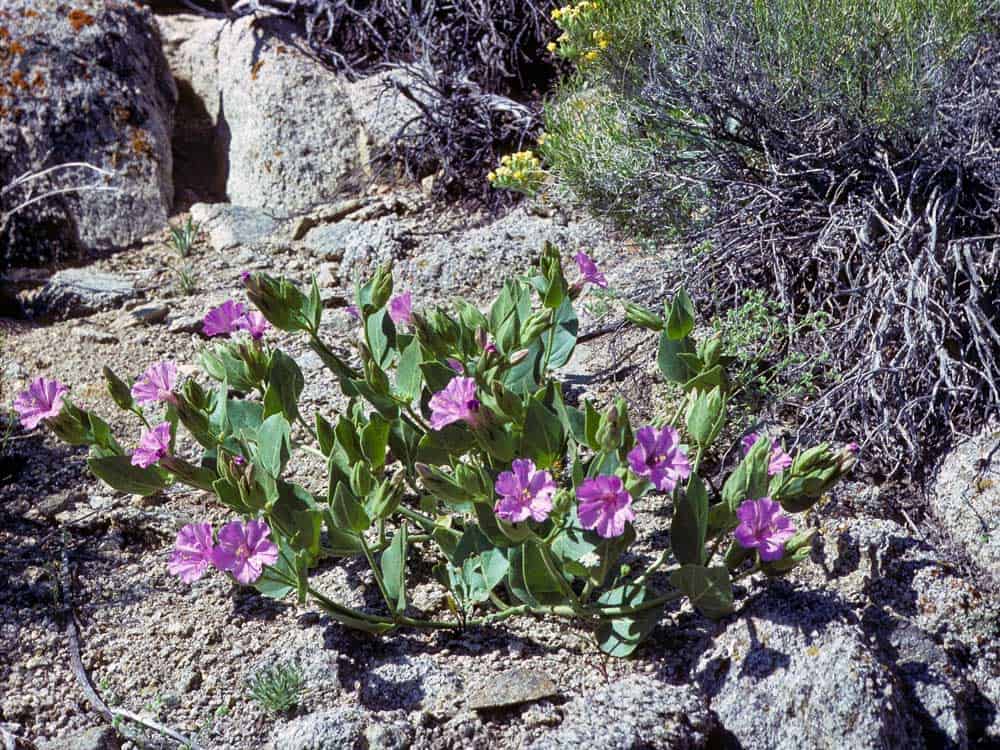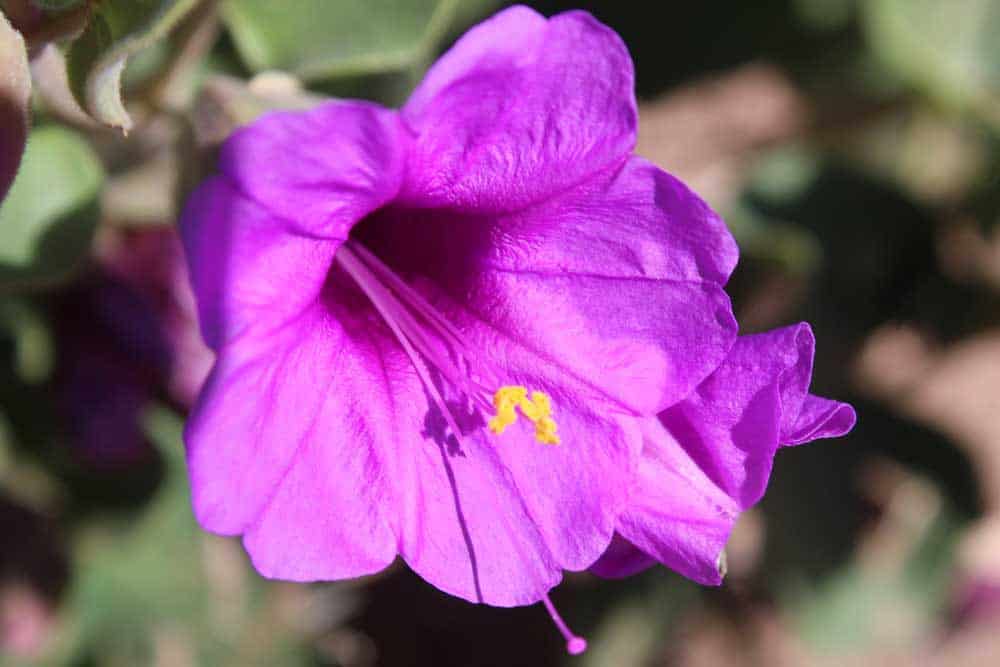As evening falls over the hot, dry landscape, an unassuming yet remarkable plant comes alive. The Colorado Four O’Clock or Desert Four O’Clock (Mirabilis multiflora) unfurls its vibrant magenta flowers, opening up in the cooler hours of dusk.

Mirabilis multiflora can reach up to three feet tall and several feet wide, forming a dense mat that provides excellent erosion control on slopes and embankments. It requires virtually no supplemental watering once established, making it an ideal low-maintenance groundcover for water-wise gardening.
A Nightly Floral Display
One of the most intriguing aspects of this plant is its nocturnal blooming habit. As the sun goes down, the tubular, magenta-colored flowers dramatically unfurl, releasing a sweet fragrance to attract evening pollinators like hawk moths, bees, and even bats.
But the show doesn’t last long – by morning, the blossoms have closed up again, waiting again for cooler evening temps. This unique adaptation helps the plant conserve precious moisture and energy during the scorching desert days.
Specialist Relationships
Mirabilis multiflora, like other members of the Nyctaginaceae family, has specialized relationships with its pollinators. The flowers of Mirabilis multiflora are adapted to attract specific pollinators through their structure and nectar composition. The primary pollinators of Mirabilis multiflora are nocturnal Lepidoptera (moths), which are attracted to the flowers’ nectar. This nocturnal pollination strategy is common among species in the Nyctaginaceae family, where moths are the most frequent visitors. Hymenoptera (bees and wasps) are also common visitors for many species in this family.

How to Use Desert Four O’Clock (Mirabilis multiflora) in the Landscape
Native plant gardeners can use the Colorado Four O’Clock (Mirabilis multiflora) to its best advantage in their landscapes by leveraging its unique characteristics and ecological benefits. Here are some key strategies:
Drought Tolerance and Soil Adaptability
Mirabilis multiflora is highly drought-tolerant and can thrive in a variety of soil types, particularly medium to coarse-textured soils with a pH range of 6.5 to 8.5. This makes it an excellent choice for xeriscaping and low-water gardens, especially in arid and semi-arid regions.
Attractive Floral Display
The plant produces large, funnel-shaped, magenta-colored flowers that are visually striking and can add vibrant color to the garden. These flowers are 2.5 to 7.5 cm (1 to 3 inches) long and about 2.5 cm (1 inch) wide, with bright yellow stamens extending beyond the flower. This makes Mirabilis multiflora an attractive ornamental plant that can serve as a focal point in garden design.
Pollinator Support
Mirabilis multiflora has specialized relationships with nocturnal pollinators, particularly moths. By planting this species, gardeners can support local pollinator populations, which are crucial for maintaining biodiversity. The flowers open in the late afternoon and remain open until the following morning, providing a nectar source for nocturnal pollinators.
Habitat Creation
The plant’s ability to form large clumps from multiple stems emerging from substantial underground tubers makes it suitable for creating dense, low-maintenance ground cover. This can help in stabilizing soil and preventing erosion, particularly in rocky or sloped areas where it often naturally occurs.
Wildlife Habitat
The dense foliage and structure of Mirabilis multiflora can provide shelter and habitat for various small wildlife, including invertebrates and possibly small mammals. This can enhance the ecological value of the garden by creating a more diverse and resilient ecosystem.
